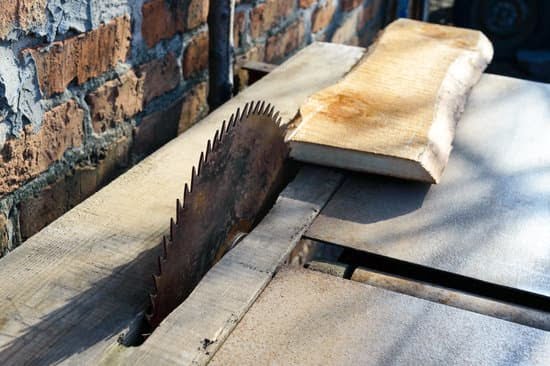Are you wondering how to remove paint from varnished woodwork? It can be a challenging task, but with the right techniques and tools, it is possible to restore your woodwork to its original state. Varnished woodwork adds a beautiful finish to any space, but when paint gets in the way, it can be frustrating. In this article, we will explore different methods for removing paint from varnished woodwork, from chemical paint strippers to heat application and mechanical removal.
Removing paint from varnished woodwork requires careful consideration and proper execution to avoid damaging the wood underneath. By understanding the challenge at hand, you can better prepare yourself for the process ahead. This article will guide you through the steps of preparing your workspace, testing different methods, and using techniques such as chemical paint strippers, heat application, and mechanical removal to effectively remove paint without harming the underlying woodwork.
Whether you are dealing with a small touch-up or a larger restoration project, it is important to gather the necessary tools and materials before starting. In this introduction, we will set the stage for exploring various methods for removing paint from varnished woodwork and provide valuable tips and tricks for achieving successful results. So let’s dive in and discover how you can tackle this challenging task with confidence.
Preparing the Workspace
When it comes to removing paint from varnished woodwork, preparation is key. Before diving into the paint removal process, it’s important to gather all the necessary tools and materials to ensure a smooth and successful project. Here, we’ll discuss the essential items needed for this task.
Gathering Tools and Equipment
The first step in preparing the workspace is to gather the tools and equipment needed for paint removal. This includes items such as paint scrapers, sandpaper, heat guns or infrared paint removers, chemical paint strippers, protective gloves and eyewear, drop cloths or plastic sheeting to protect surrounding areas, and a well-ventilated workspace.
Choosing the Right Paint Strippers
If you opt for using chemical paint strippers as part of your paint removal process, it’s important to choose the right product for your specific needs. Look for chemical paint strippers that are safe for use on varnished surfaces and follow the manufacturer’s instructions for application and safety precautions.
Preparing Safety Measures
Before starting any paint removal work on varnished woodwork, make sure to prepare safety measures such as wearing protective gear including gloves and goggles. Additionally, make sure to properly ventilate the workspace by opening windows or using fans to prevent inhaling fumes from chemical paint strippers or other products used during the process. Taking these precautions will help ensure a safe and successful project.
By gathering the necessary tools and materials and taking proper safety precautions, you can set yourself up for a successful paint removal process on varnished woodwork. In the next section, we will discuss testing different techniques on a small area before proceeding with overall paint removal.
Testing the Method
When trying to remove paint from varnished woodwork, it is crucial to test out different techniques on a small, inconspicuous area before tackling the entire surface. This will help you determine which method works best without causing any damage to the woodwork.
To effectively test the paint removal method, here are a few steps you can follow:
- Choose a small, hidden area: Pick a spot that is not easily visible, such as the back of a cabinet or underneath a piece of furniture.
- Use multiple techniques: Test out chemical paint strippers, heat application, and mechanical removal methods on this small area to see which one yields the best results.
- Observe the results: Take note of how each method affects the varnished woodwork. Look for any damage or discoloration caused by the paint removal process.
It’s important to conduct this test because certain methods may work better on specific types of varnished woodwork. By identifying the most effective technique through testing, you can proceed with confidence when removing paint from the entire surface.
Additionally, testing the method on a small area allows you to make any necessary adjustments before applying it to larger sections of varnished woodwork. This can save time and prevent costly mistakes in the long run. By following this crucial step in the paint removal process, you can ensure that your varnished woodwork is restored without causing unnecessary damage.
Chemical Paint Strippers
When selecting a chemical paint stripper, it is crucial to choose one that is suitable for use on varnished woodwork. Some products may be too harsh and can damage the wood or varnish, so it is essential to read the label carefully and follow the manufacturer’s instructions. Additionally, it is advisable to test the product on a small, inconspicuous area before applying it to the entire surface to ensure that it does not cause any adverse effects.
Applying the chemical paint stripper according to the manufacturer’s instructions is key to achieving optimal results. Typically, the product needs to be brushed onto the painted surface and left to sit for a specified amount of time before the softened paint can be gently scraped away. After removing as much of the paint as possible with the stripper, any remaining residue should be thoroughly cleaned off before refinishing the woodwork.
Chemical paint strippers can provide an effective solution for removing paint from varnished woodwork when used correctly. It’s important to explore different options and techniques available in order to find what works best for your specific project. If you’re unsure about how to remove paint from varnished woodwork using chemical strippers, consulting with a professional or researching further into recommended products could help ensure success in your restoration process.
Heat Application
When it comes to removing paint from varnished woodwork, using heat application can be an effective method. Heat guns or infrared paint removers can help soften and loosen the paint, making it easier to scrape off. Here are some steps on how to use heat application for removing paint from varnished woodwork:
1. Safety first: Before using a heat gun or infrared paint remover, make sure to wear protective gear such as gloves, safety goggles, and a respirator to avoid inhaling harmful fumes.
2. Start with a test: Just like with any other method of paint removal, it’s important to test the heat application on a small, inconspicuous area of the woodwork first. This will help you determine the right temperature and technique to use without damaging the surface.
3. Applying the heat: Once you’ve determined the appropriate settings for your heat gun or infrared paint remover, gently apply the heat over the painted area in smooth, even strokes. Be careful not to keep the heat in one spot for too long as it could scorch or burn the wood.
Using heat application can be an effective way to remove paint from varnished woodwork. However, it’s important to proceed with caution and follow proper safety measures. By testing out different techniques and being mindful of temperature and pressure, you can successfully remove unwanted paint from your woodwork while preserving its natural beauty.
Mechanical Removal
When it comes to removing paint from varnished woodwork, mechanical removal methods can be effective but require careful execution to avoid damaging the underlying wood. One of the most common techniques for mechanical paint removal is sanding. This involves using sandpaper or a power sander to gradually wear away the layers of paint until reaching the varnished surface. It’s important to start with a coarse grit sandpaper and progressively switch to finer grits for a smooth finish.
Another physical method for removing paint from varnished woodwork is scraping. This involves using a putty knife or paint scraper to gently lift and remove the old paint. It’s crucial to use caution when scraping to prevent gouging or scratching the wood underneath. Additionally, heat guns or infrared paint removers can be used in conjunction with scraping to soften the paint for easier removal.
It’s essential to wear protective gear such as goggles and a mask when using mechanical removal methods, as they can generate dust and debris that may be harmful if inhaled. Proper ventilation in the workspace is also important for safety. Lastly, always follow up any form of mechanical removal with thorough cleaning and refinishing steps to restore the beauty of your varnished woodwork.
| Mechanical Removal Methods | Considerations |
|---|---|
| Sanding | Use different grits of sandpaper for a smooth finish |
| Scraping | Be cautious not to damage the underlying wood |
| Protective Gear | Wear goggles and a mask for safety |
| Cleaning & Refinishing | Render thorough care post-removal for enhanced visual appeal |
Cleaning and Refinishing
After successfully removing the paint from varnished woodwork, the next step is to prepare the surface for a fresh coat of varnish or paint. This involves cleaning any residue left behind by the paint removal process and ensuring that the woodwork is ready for refinishing.
Cleaning the Woodwork
Once the paint has been removed, it’s important to thoroughly clean the woodwork to remove any remaining debris or chemical residue. Use a mild detergent and water to scrub the surface, being careful not to damage the wood. Rinse with clean water and allow ample time for drying before moving on to the next step.
Sanding and Smoothing
After cleaning, inspect the woodwork for any rough patches or uneven areas. Use fine-grit sandpaper to gently sand down any imperfections, creating a smooth and even surface for refinishing. Pay close attention to detail and take your time during this step to ensure a professional-looking finish.
Refinishing Options
Depending on your preference, you can choose to apply a fresh coat of varnish or paint to the woodwork. If opting for varnish, select a product that complements the natural beauty of the wood and follow manufacturer instructions for application. For painting, consider using a high-quality primer before applying your desired paint color for best results.
By following these steps, you can effectively prepare varnished woodwork for a new finish after removing paint. Taking care during this stage will ensure that your woodwork looks refreshed and revitalized once again.
Tips and Tricks
When it comes to removing paint from varnished woodwork, there are a few tips and tricks that can make the process smoother and more effective. One important tip is to always wear protective gear such as gloves, goggles, and a mask when working with chemical paint strippers or sanding wood.
This will help protect you from any potential hazards during the paint removal process. Additionally, ensure that the workspace is well-ventilated to avoid inhaling fumes from paint strippers or dust from sanding.
Another useful tip is to be patient and thorough when testing different paint removal methods. As mentioned in the previous section, testing the chosen method on a small, inconspicuous area of the woodwork is crucial in determining its effectiveness and ensuring that it does not damage the surface.
It’s also important to remember that removing paint from varnished woodwork can be a time-consuming task, especially if multiple layers of paint need to be removed. Taking your time and being meticulous in your approach will ultimately lead to better results.
Lastly, it’s essential to properly dispose of any waste generated during the paint removal process. This includes used paint stripper residue, sanding dust, or any other materials that may have come into contact with lead-based paint.
Always follow local regulations and guidelines for disposing of hazardous waste to ensure environmental safety. By following these tips and tricks, along with the methods outlined in this article on how to remove paint from varnished woodwork, you can successfully restore your woodwork to its original beauty.
Conclusion
In conclusion, removing paint from varnished woodwork can be a challenging but manageable task with the right tools and techniques. By following the steps outlined in this article, you can successfully restore your woodwork to its original state and prepare it for a fresh coat of varnish or paint.
Throughout the process, it is essential to take your time and exercise patience, especially when trying out different methods on a small, inconspicuous area. This will allow you to determine the most effective approach for your specific project and avoid any potential damage to the woodwork.
Whether you opt for chemical paint strippers, heat application, or mechanical removal, always prioritize safety by using protective gear and following the manufacturer’s instructions. Additionally, consider seeking professional help if you encounter stubborn paint layers that are difficult to remove. Ultimately, with careful planning and execution, you can achieve a successful restoration of your varnished woodwork.
Frequently Asked Questions
How Do You Remove Paint From Wood Without Damaging Varnish?
The best way to remove paint from wood without damaging the varnish is by using a gentle solvent or paint stripper specifically designed for this purpose. Applying the product carefully and gently scraping off the paint can help preserve the underlying varnish.
How Do You Get Dried Paint Off of Wood Trim?
Removing dried paint from wood trim can be done by first softening the paint with a heat gun or a hairdryer, then gently scraping it off with a putty knife or plastic scraper. Be careful not to damage the wood underneath.
How Do You Remove Dried Acrylic Paint From Varnished Wood?
To remove dried acrylic paint from varnished wood, start by softening the paint with warm, soapy water and gently scrubbing it with a soft-bristled brush or cloth. If that doesn’t work, try using rubbing alcohol or acetone in a well-ventilated area to dissolve the dried acrylic paint without damaging the varnish.

Hi everyone! I’m a woodworker and blogger, and this is my woodworking blog. In my blog, I share tips and tricks for woodworkers of all skill levels, as well as project ideas that you can try yourself.





